
Difference Between Sensing and Intuition
Sensing is the process of using the five physical senses to gather information about the present environment. Intuition, in contrast, involves understanding or knowing something without conscious reasoning.
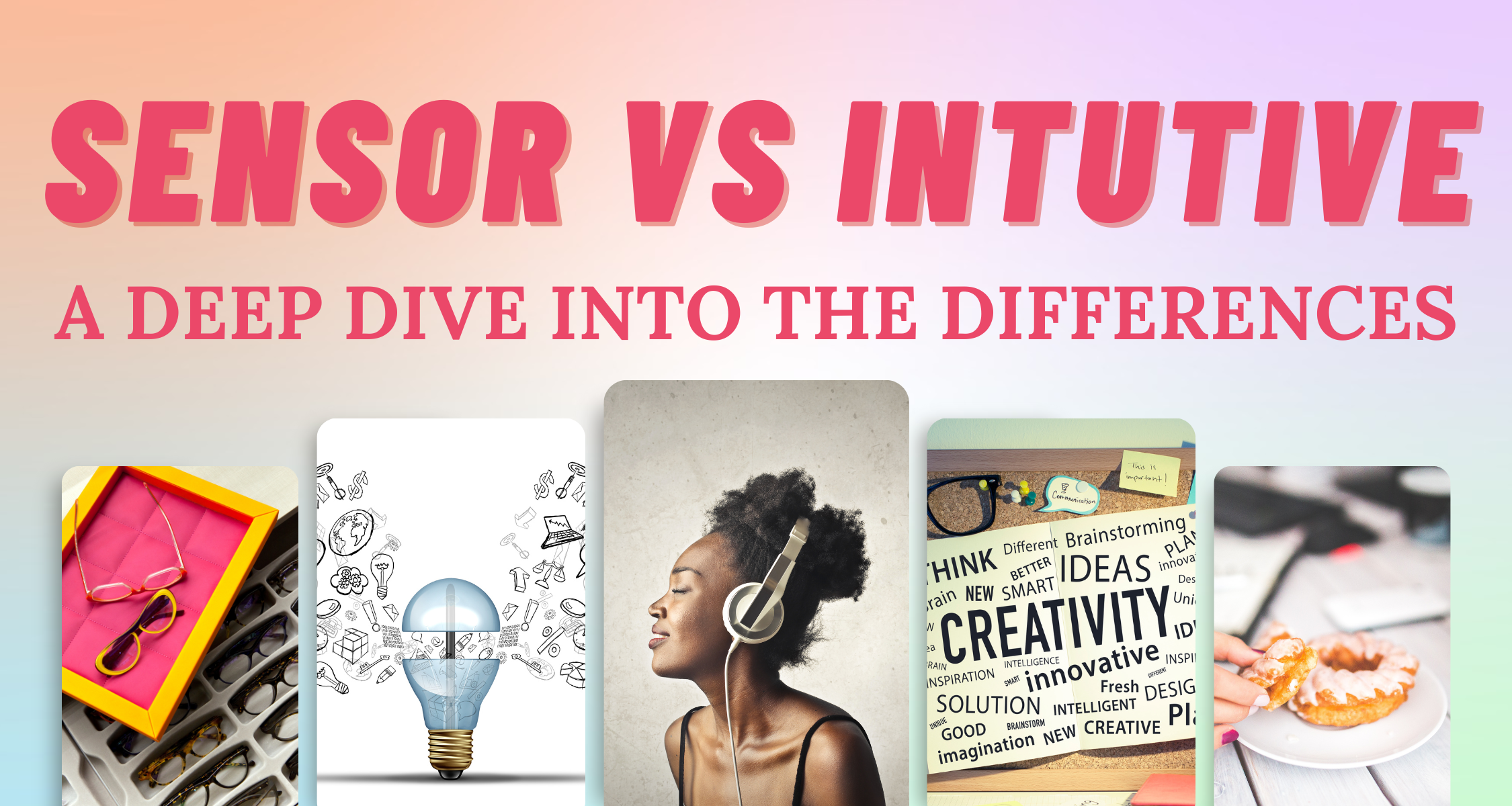
Sensor vs Intuitive Which Are You? So Syncd Personality Dating
In Myers & Briggs' personality typing, the Sensing/Intuition dichotomy describes how a person takes in information, whether through sensory-based experiences or by intuitively recognizing factual patterns and connections. Find your type
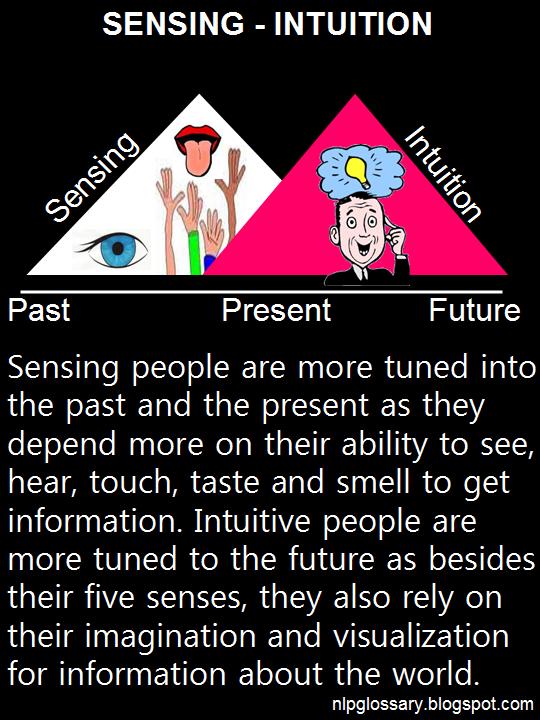
NLP GLOSSARY MBTI Sensing and Intuition
How To Properly Use The Words In A Sentence Using the words sensing and intuition correctly in a sentence can be challenging, especially since they are often used interchangeably. However, understanding the difference between the two can help you communicate your thoughts and ideas more effectively. How To Use Sensing In A Sentence

Sensing (S) VS Intuition (N) S Vs N In MBTI By Asma YouTube
Sensing is focused on gathering information through the use of the five senses (sight, hearing, touch, taste, and smell). It emphasizes concrete and factual details. On the other hand, intuition gathers information through patterns, connections, and possibilities. It is more abstract and focuses on underlying meanings rather than concrete.
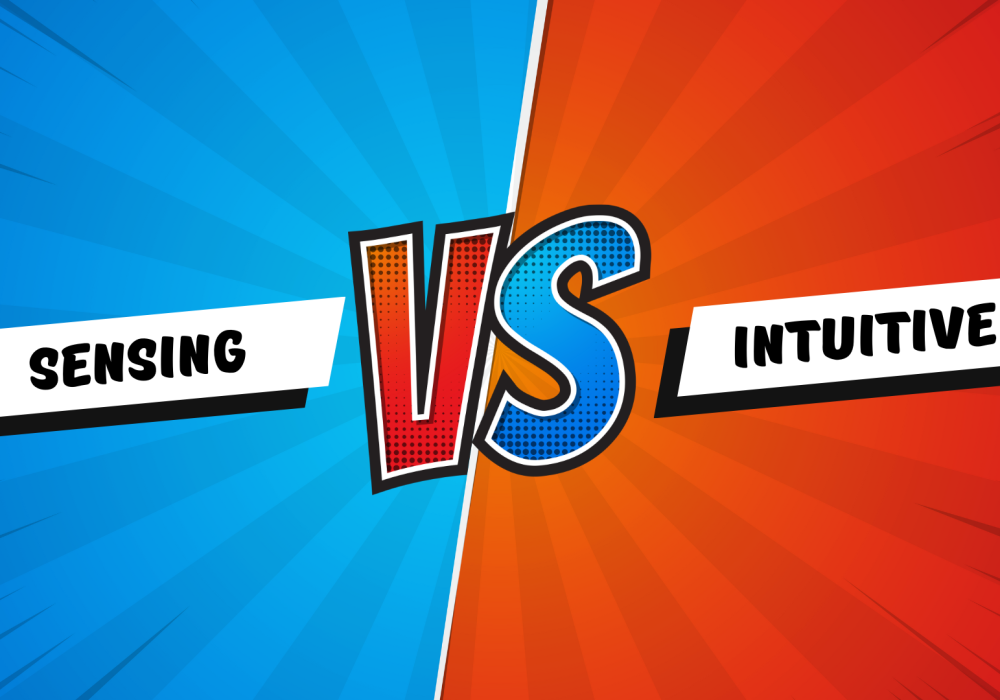
Sensing vs Intuitive The specifics and clarity vs the big picture and overall impression
Sensing vs. Intuition Test: Which Do You Lean Toward? Most tests will force you to choose between sensing and intuition, sometimes offering only one neutral option for those who can't decide.
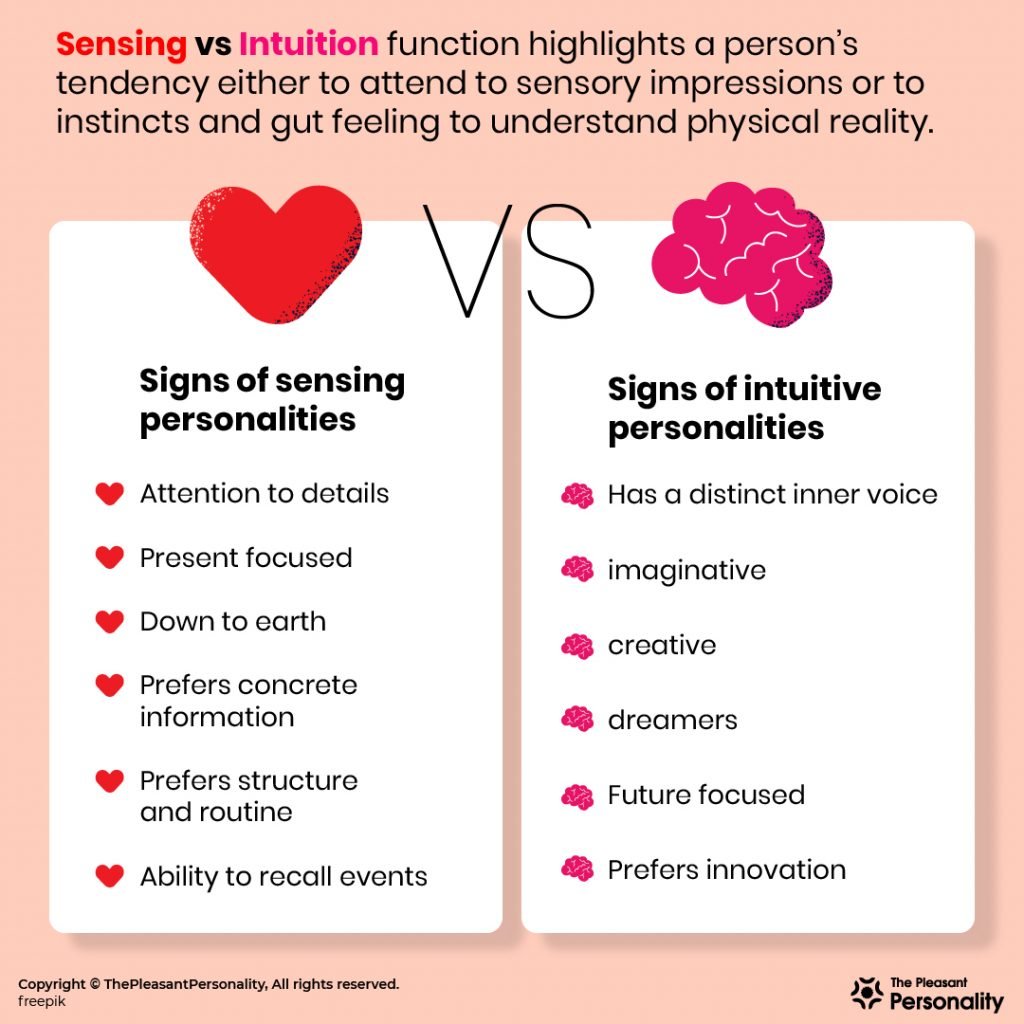
Sensing Vs Intuition The Perceptual Preferences
Sensing versus Intuition is kind of a big deal. Regardless of your personal style, managing effectively means exercising some versatility in the way you motivate and lead your people to reach their fullest potential. Here's how to flex your style to meet the specific needs of Sensors and Intuitives. How to spot a Sensor versus an Intuitive

Everyone uses Sensing and Intuition to process information. One of them is likely more natural
The Sensing vs. Intuition dichotomy charts the information processing capacities of all human beings. Within the Myers and Briggs typing system, your possession of one or the other of these functions will determine how you absorb information, and what you do with it once you've taken it in.
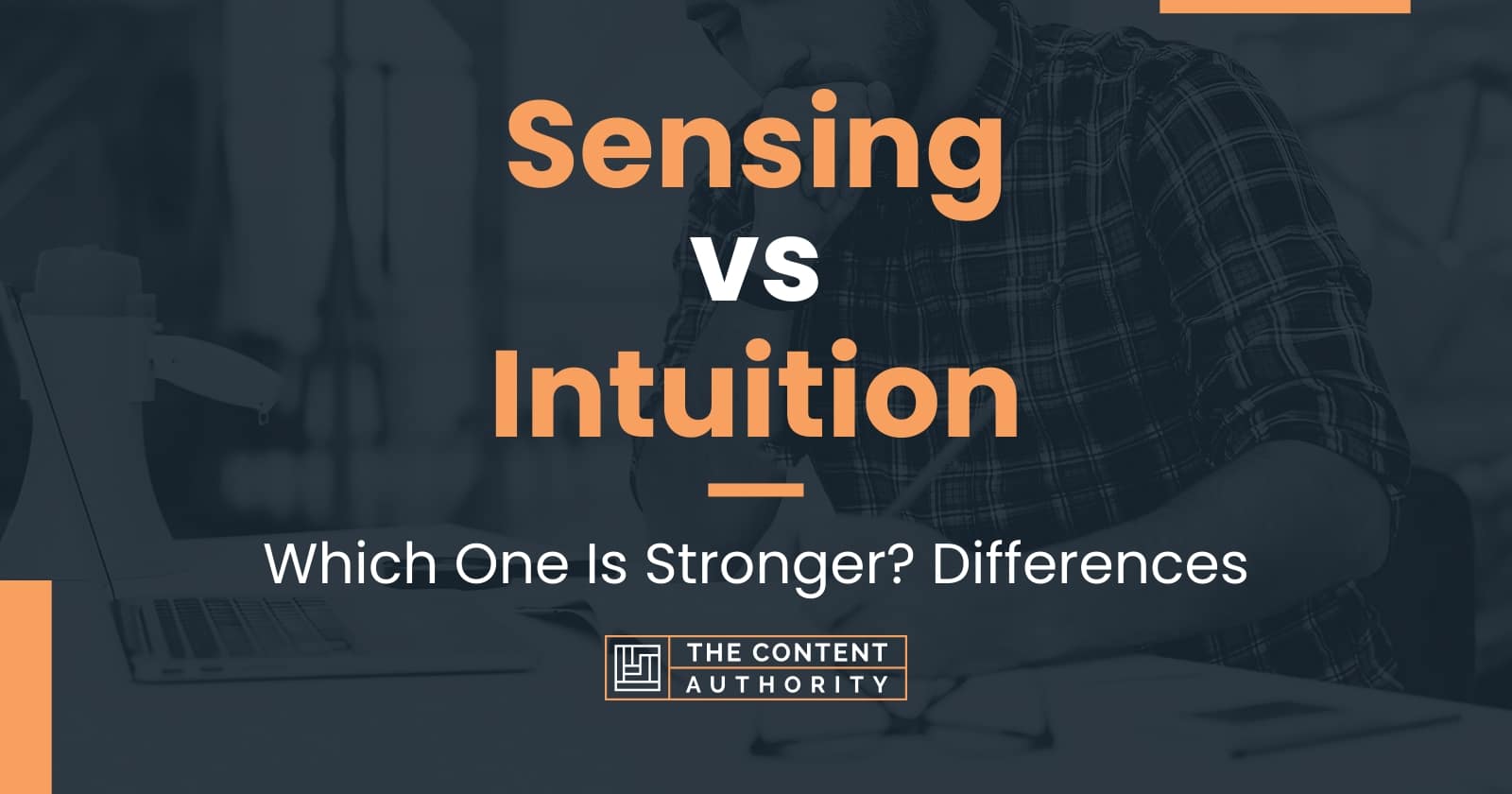
Sensing vs Intuition Which One Is Stronger? Differences
Sensing and Intuition are opposite preferences. A person's natural tendency toward one will be stronger than the other. There are by far more Sensing people in the population than Intuitives. Sensors make up almost three-fourths of all people with Intuitives at just over 26%. Females are on average slightly more Sensing than males. Sensing (S)

Sensing vs Intuition What Is the Difference and Which of the Two Do You Use? (With images
Differences between sensing and intuition 1. Information Processing: Sensing (S): Emphasizes tangible, concrete details perceived through the five senses, focusing on the present and practical aspects. Intuition (N): Leans towards abstract concepts, patterns, and future possibilities, transcending the immediate. 2. Decision-Making:

Sensing vs Intuition Illustrated Differences in Perception YouTube
Sensing vs intuition refers to perceptual preferences. Sensing types are inclined towards using the five senses in receiving outside information. Intuitive types believe in patterns, impressions, ideas, and future possibilities. Sensing personalities are present-focused and pay attention to details. Intuitive people are imaginative.
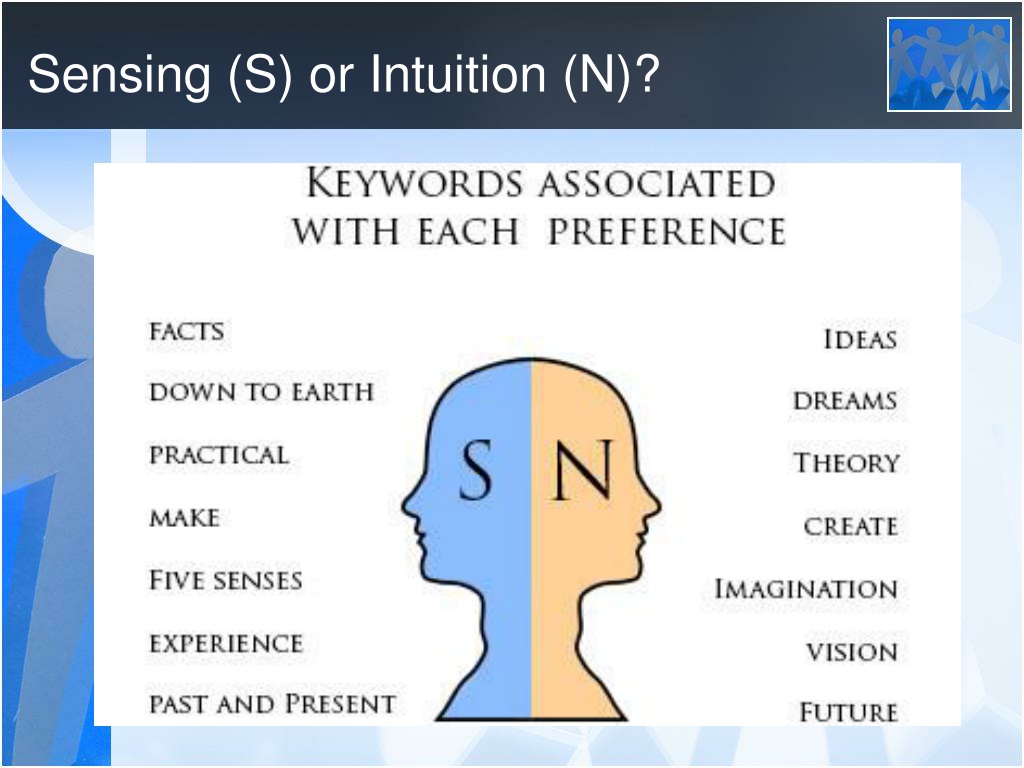
PPT 16 Personality Types PowerPoint Presentation, free download ID9674972
Created by renowned psychiatrist Carl Jung and popularized since the 1940s, the Myers-Briggs Type Indicator (MBTI) uses tailored questions to find your combination of four sets of opposing traits: introverted versus extroverted; sensing versus intuitive; thinking versus feeling; and perceiving versus judging.

Intuitive vs Sensing Which One Is Stronger? Differences
Intuiting and Sensing represent two very different strategies for dealing with the world. Both strategies have very real advantages over the other, depending on the situation. Sensing vs intuition - trying to compare the two is kind of like trying to compare two different kinds of athletes, for example a sprinter and a marathoner.
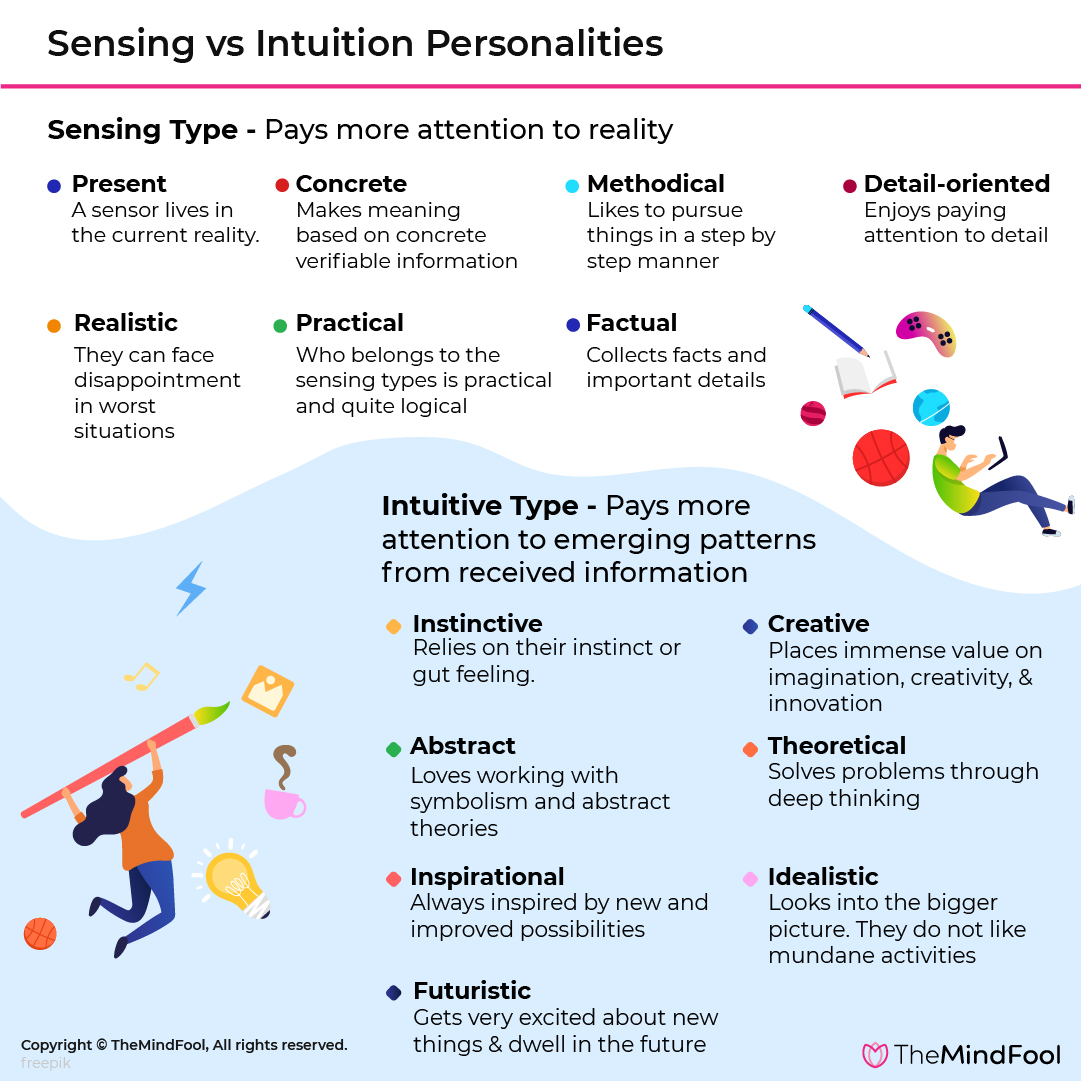
Sensing vs Intuition Intuitive Personality Sensing Personality Sensing vs Intuition Test
Sensing and intuition are how people take in info according to the MBTI. The MBTI, or Myers-Briggs Type Indicator, is a test that categories people into 1 of 16 personality types which are based on 4 dimensions: introversion (I) or extroversion (E), sensing (S) or intuition (N), thinking (T) or feeling (F), and judging (J) or perceiving (P).

Client Engagement Session Infp personality, Infj personality, Personality psychology
Sensing (S) and Intuition (N) are two functions that are used to gather and analyze new information, either through your five human senses or in more abstract ways. The preferences of sensing and intuition are diametrically opposed. The natural inclination of any personis what makes them either a sensor or intuitive personality type.

Sensing vs Intuition What Is the Difference and Which of the Two Do You Use? Learning Mind
Myers-Briggs is a personality test assessment. It focuses on people's preferences on four different spectrums: Introversion to Extroversion. Sensing to Intuition. Feeling to Thinking. Perceiving to Judging. People tend to gravitate toward one end or the other on each spectrum. Occasionally, people will have preferences that land more toward the.

sensor and intuitive Archives Joe Arrigo
Sensing is the ability to gather information through the five senses, while intuition is the ability to understand information through patterns and connections. Understanding the differences between these two perceptual functions can help you better understand yourself and others.